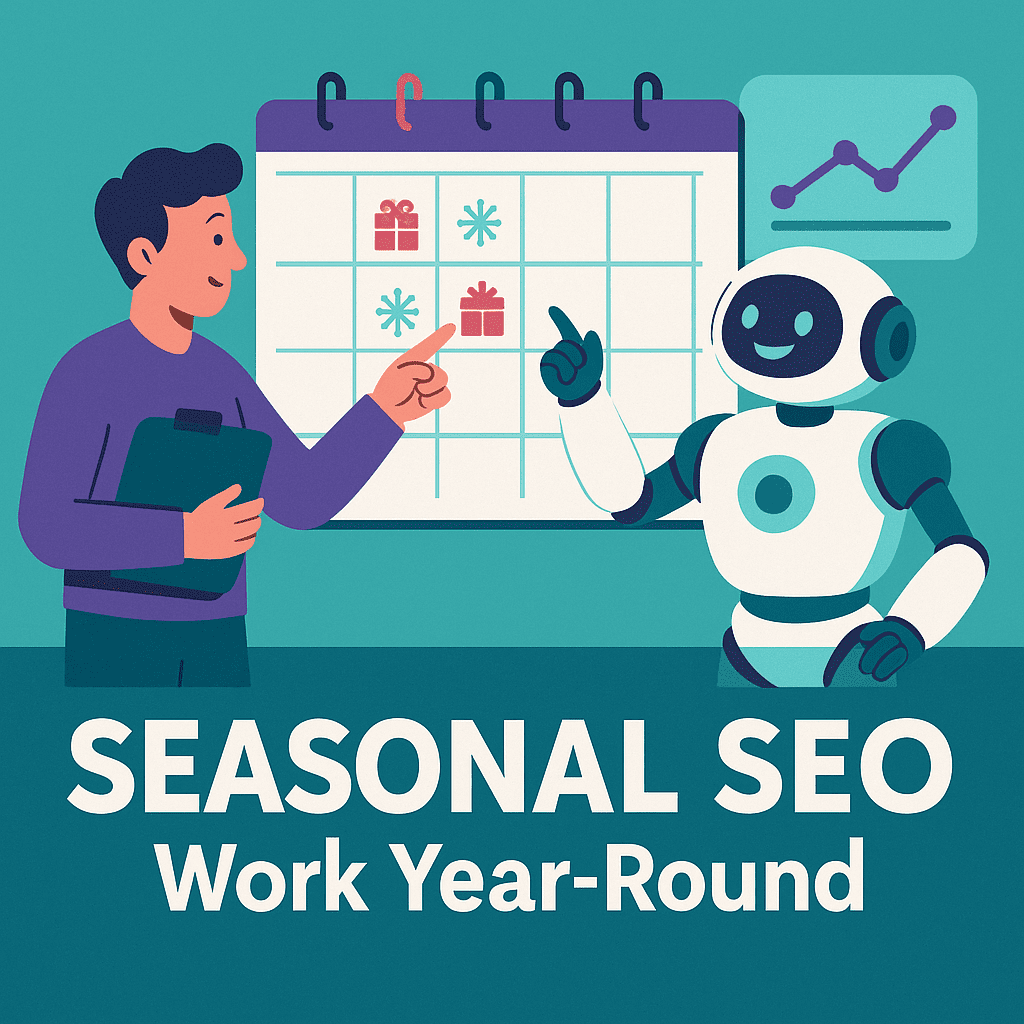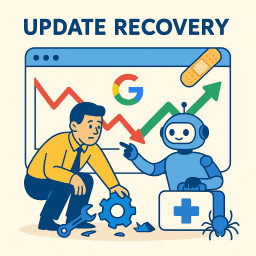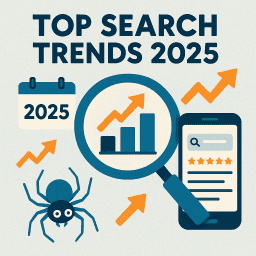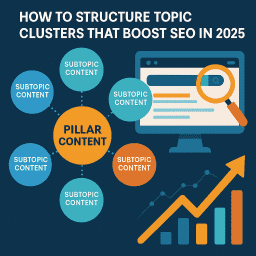Seasonal SEO Strategy for Events, Holidays & Trends
Focuses on timing content, optimising seasonal keywords, and managing page visibility throughout the year.
⚡ How to Ride the Seasonal SEO Wave (and Stay Afloat)
Seasonal peaks aren’t just for retailers. Whether it’s Valentine’s Day gifts, summer travel, or a once-off industry conference, timing—and preparation—decides whether you ride the wave or miss it. This guide shows how to plan, optimise, promote and sunset seasonal pages without losing year-round momentum.
🔍 What Is Seasonal SEO?
- Event-driven queries: Black Friday, Cyber Monday, conferences, festivals
- Date-driven queries: “best Mother’s Day gifts 2026”
- Trend-driven queries: “summer fashion colours” or “winter skin-care tips”
Unlike evergreen pages, seasonal content wins big in short bursts and must be timed to appear before peak demand.
🗓️ Timing Matters: Plan in Advance
Lead Time Benchmarks
- Retail gifts: publish 8–10 weeks before peak
- Travel & hospitality: 3–6 months before departure season
- Industry events: 4–6 months before ticket sales
Google needs time to crawl, index and rank your new pages—build that into your calendar.
🔑 Finding & Prioritising Seasonal Keywords
How to Spot Seasonal Demand
- Check Google Trends for yearly spikes
- Export month-by-month search volume in Semrush or Ahrefs
- Layer location or year modifiers (“2025”, “near me”)
Keyword Buckets
- Early-research: “winter wardrobe ideas”
- Comparison: “best Black Friday laptop deals”
- Transactional: “buy advent calendar UK”
🛠️ On-Page Optimisation for Seasonal Pages
Meta & Structured Data
- Add year/season to
<title>and H1 for freshness - Use
eventorproductschema where relevant - Include FAQs (“When is Black Friday 2025?”) for SERP real estate
Internal Linking
Link from evergreen “/deals/” or “/events/” hubs to your seasonal page to transfer authority and help Google find it fast.
🚦 Managing Page Visibility Throughout the Year
Keep or Noindex?
| Period | Action |
|---|---|
| Pre-season | Keep live, update copy, add “2026” variants |
| Peak season | Full optimisation + promotion |
| Post-season | Switch to “off-season” messaging or noindex if irrelevant |
Redirect or Reuse
If the offer won’t return, 301‐redirect to a related evergreen page. Otherwise refresh and relaunch next year to preserve equity.
📈 Promotion & Refresh Cycles
- Republish updated guides with a new “last modified” date
- Secure quick backlinks via gift guides, round-ups, PR pitches
- Leverage email and social “coming soon” teasers
🎯 Key Takeaways
- Start keyword and content prep months before peak demand.
- Use schema, FAQs and internal links to surface seasonal pages quickly.
- Decide whether to keep, refresh, noindex or redirect pages post-season.
✅ Final Thought: Seasons Change, SEO Compounds
Seasonal peaks may be fleeting, but the authority you build isn’t. Treat each campaign as an investment in next year’s rankings—plan early, optimise smart, promote hard, and then polish for the next cycle. Year on year, those peaks stack into a mountain of evergreen authority and reliable revenue.
“Seasonal SEO is like planting bulbs—what you bury today will bloom right on schedule next year.”
– David Roche
💬 What the Experts Are Saying
- Lily Ray: “Refresh last year’s seasonal pages instead of starting from zero—Google rewards continuity.”
- Brian Dean: “Temporal relevance plus backlinks is the secret sauce for seasonal traffic spikes.”
- Marie Haynes: “Avoid mass 404s after peak season—either noindex or redirect to protect quality signals.”
📝 Recap and Clarify: Post-Specific FAQs
What is seasonal SEO?
Seasonal SEO is the practice of optimising your website and content in advance of predictable spikes in user search interest—such as holidays, events, or industry trends.
Why does seasonal SEO matter?
Because timely content can generate a surge in traffic, leads, or sales during key periods. Being visible during peak demand boosts your relevance and revenue.
How far in advance should I prepare seasonal content?
Ideally, you should publish seasonal content at least 2–3 months before the peak period to allow time for indexing and ranking improvements.
What are examples of seasonal keywords?
Keywords like “Valentine’s Day gifts,” “summer travel deals,” or “Black Friday laptop sales” are all tied to seasonal search intent and volume spikes.
Should I delete old seasonal pages?
No. It’s better to update and reuse them each year. Keeping them live preserves backlinks, ranking history, and SEO equity.
How do I identify seasonal search trends?
Use tools like Google Trends, keyword planners, and past analytics to identify traffic patterns and predict upcoming seasonal interest.
Can seasonal SEO work for service-based businesses?
Yes. Many services (e.g. tax preparation, tutoring, event planning) experience seasonal peaks and can benefit from timely SEO targeting.
What type of content should I create for seasonal SEO?
Create blog posts, landing pages, guides, and promotional content that align with the seasonal needs and buying behaviours of your target audience.
Can I rank quickly with seasonal content?
Sometimes—but not always. It depends on competition and timing. The earlier you publish and promote, the more likely you are to gain visibility.
What’s the best way to reuse seasonal content?
Update the page with current dates, trends, and product info, reoptimise for fresh keywords, and promote it as part of your annual content calendar.



















